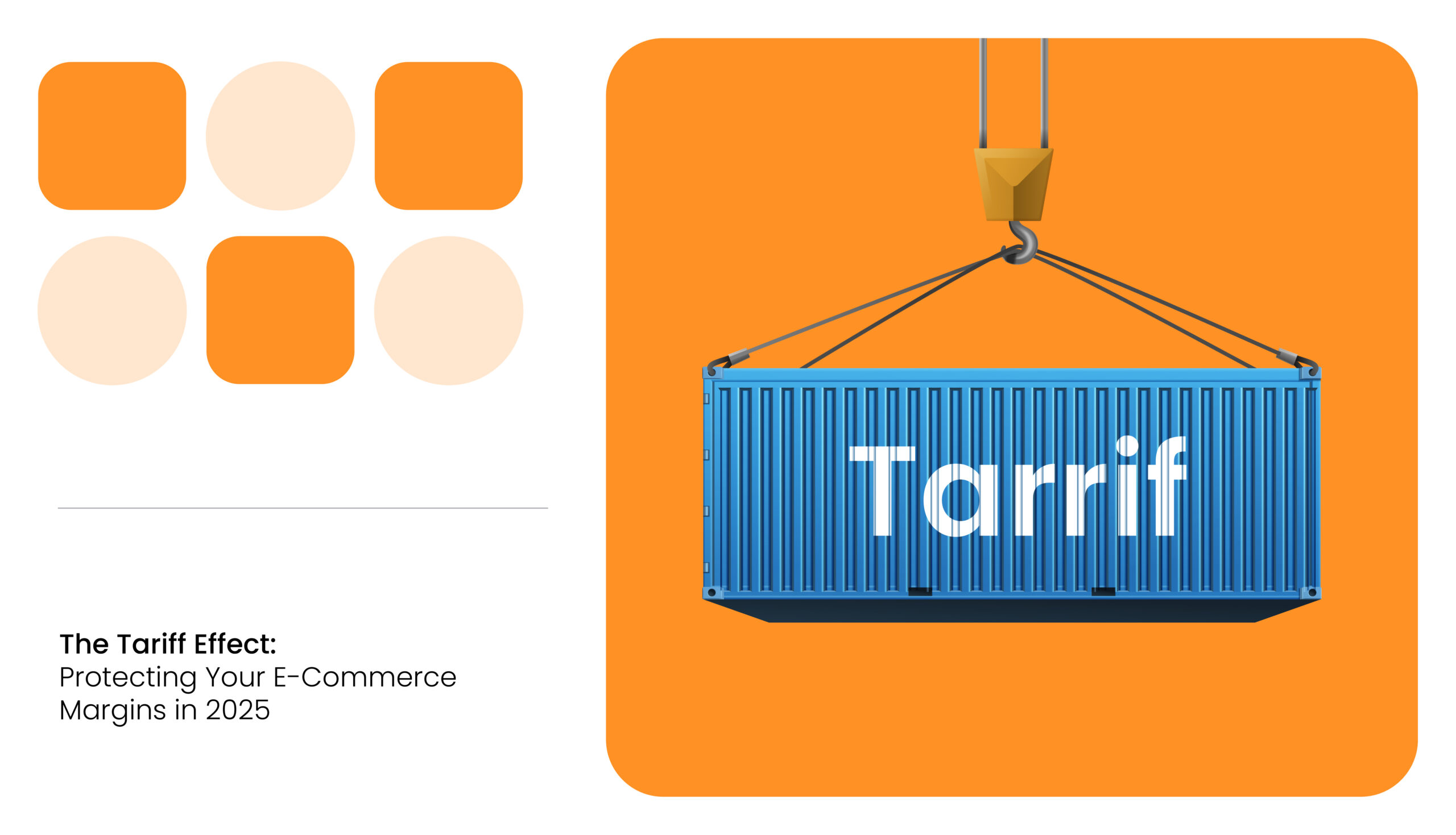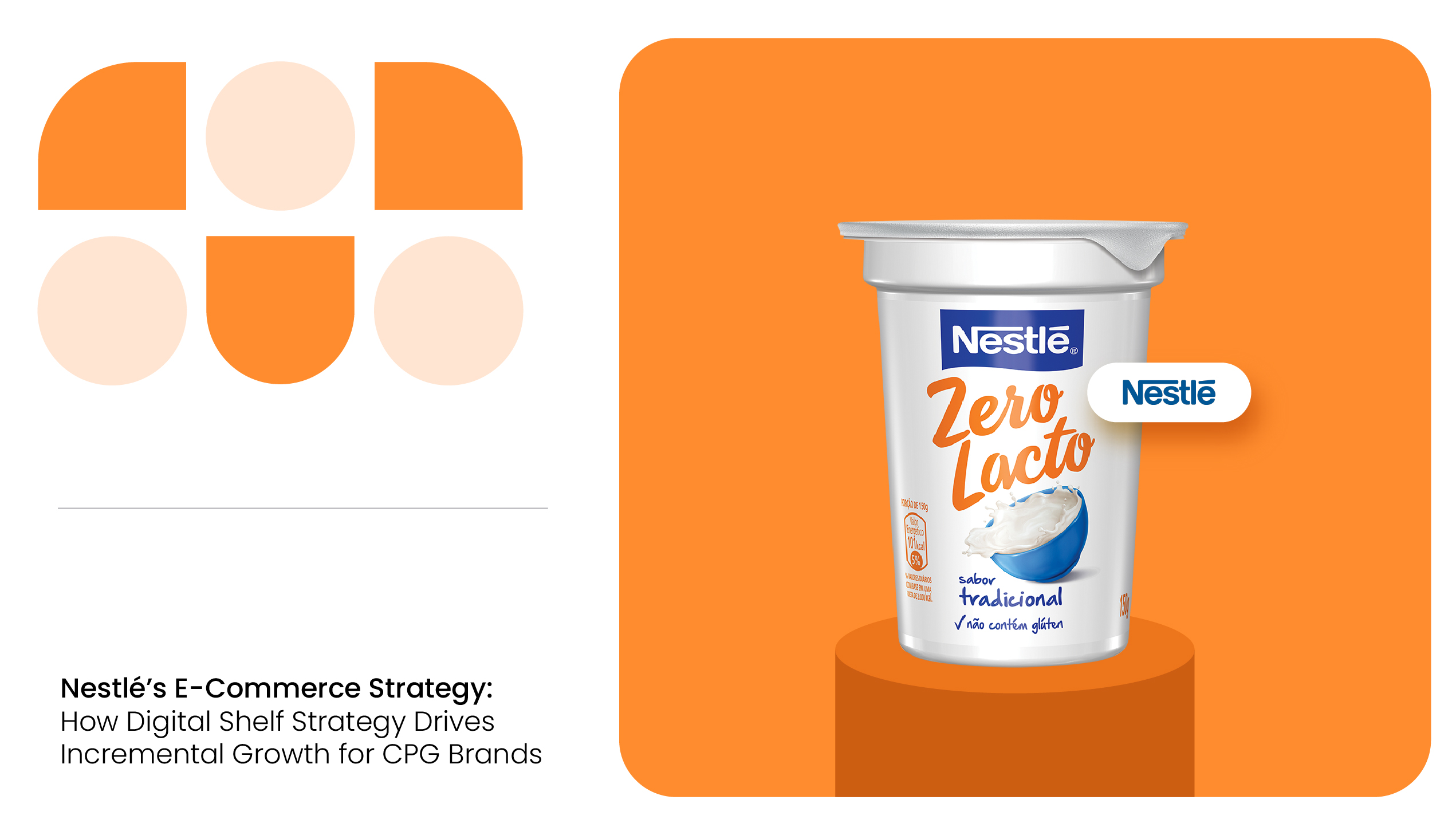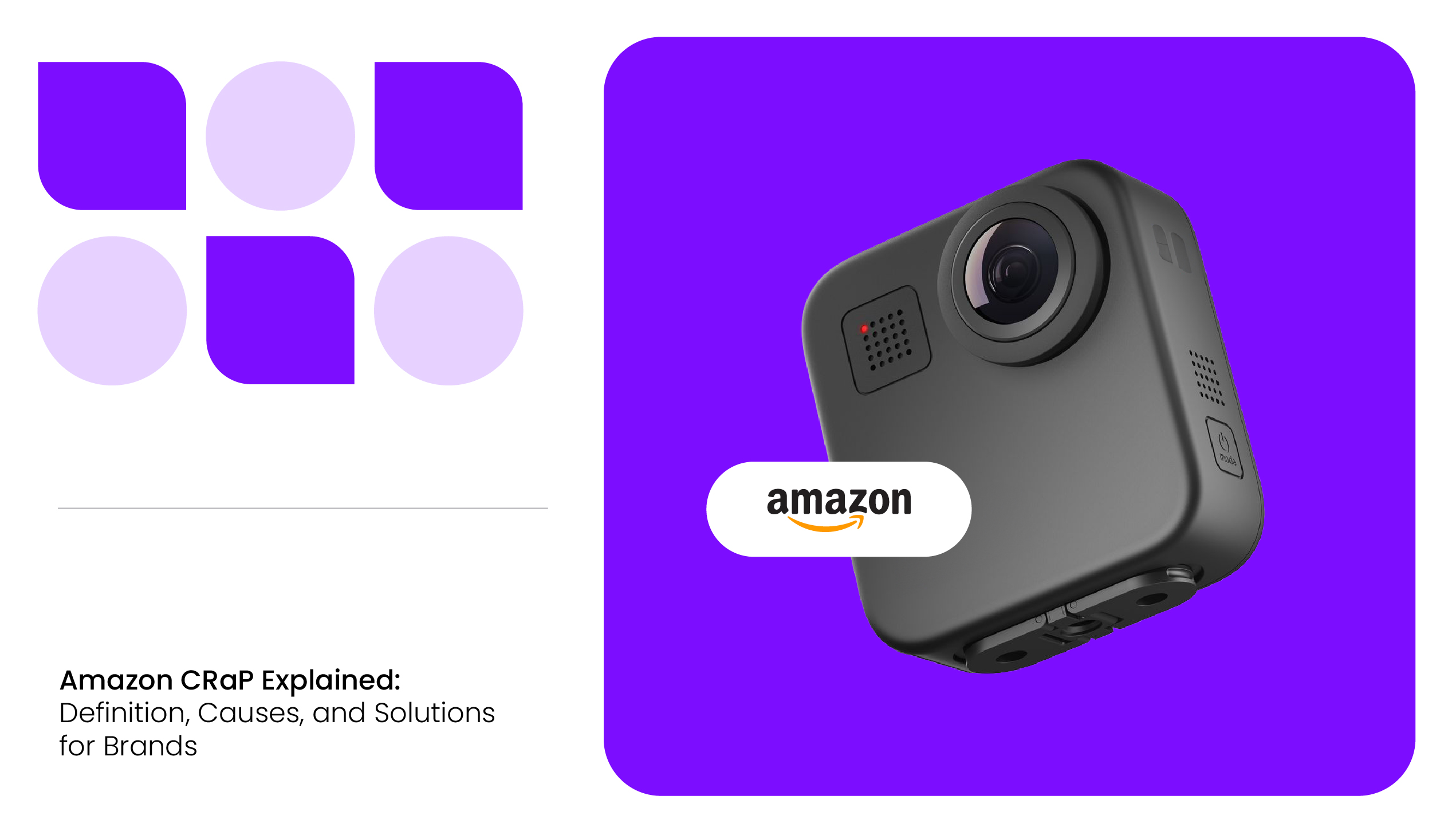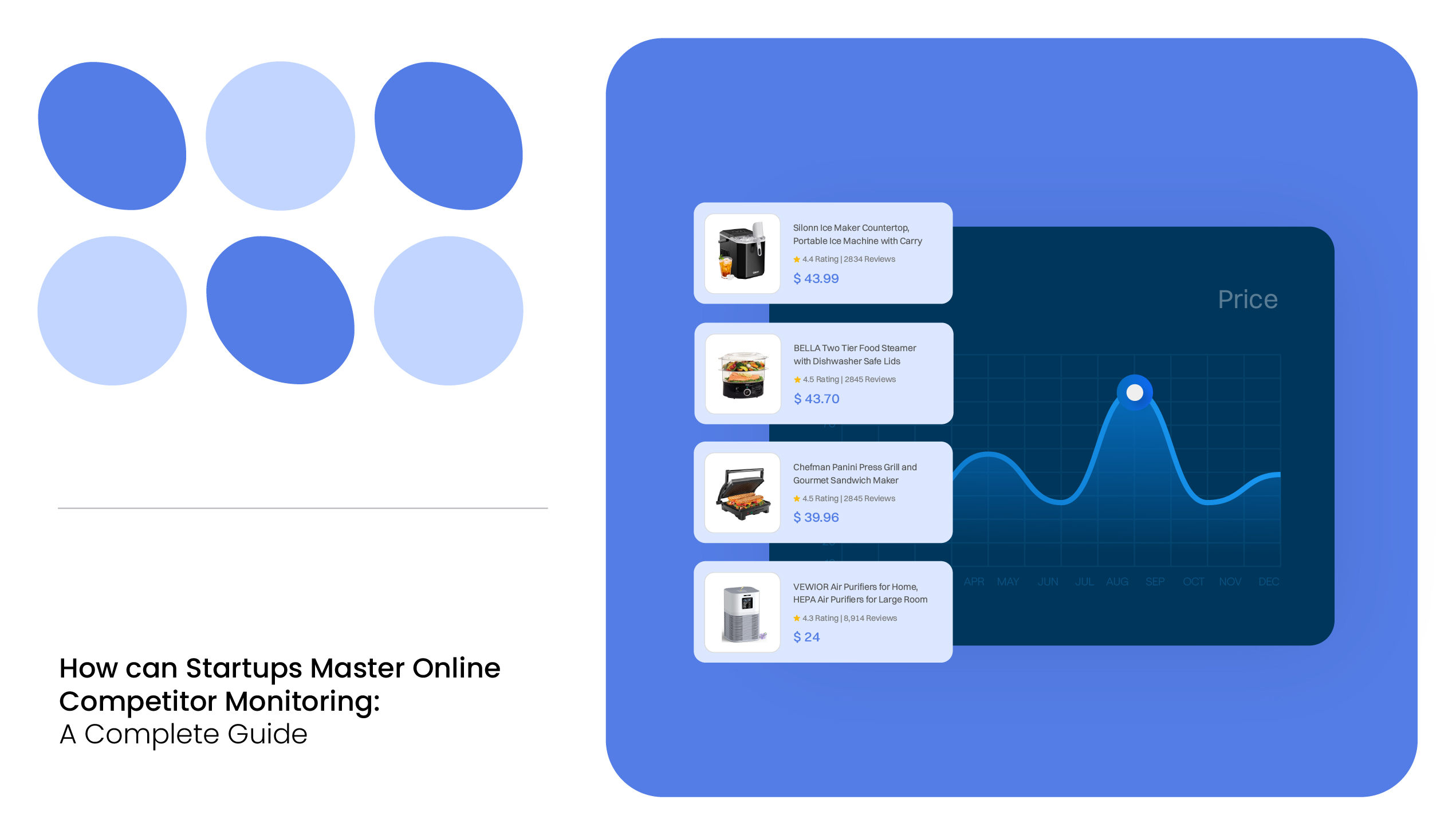In 2025, the US government introduced sweeping tariffs that are significantly impacting e-commerce businesses. These changes, with a baseline rate of 10% and tariffs as high as 145% on Chinese imports, are creating new challenges for brands and sellers.
eMarketer estimates that the new tariffs will significantly slow e-commerce growth, with projections dropping from 7.9% to 5.2%. In a heavy-tariff scenario, growth could fall to as low as 1.8 %.
This slowdown is expected to affect all segments of e-commerce, particularly businesses that rely on importing goods from countries such as China.
In this blog, we will discuss the impact of tariffs on brands and retailers, as well as the strategies they can employ to mitigate their effects.
Impact of Tariffs on Brands and E-Commerce Sellers
Numerous retailers and Amazon third-party sellers are feeling the pinch. According to Reuters, many sellers are pulling back from sales events like Prime Day and are raising prices by an average of 6–30% to offset the higher import duties.
For brands and sellers relying on global supply chains, these tariffs are exerting immense pressure on profitability. Let’s examine the immediate impact of tariffs on brands.
Cost Pressures and Pricing Adjustments
The 2025 US tariffs are causing substantial cost increases for businesses across various sectors. Companies importing products from China are particularly affected, with tariffs increasing the costs of goods such as electronics, clothing, and consumer goods.
With these tariffs in place, brands are adjusting their prices to maintain profitability. While this may help offset increased costs, it also risks alienating consumers who are already sensitive to prices. As the price of products rises, brands must carefully manage consumer expectations and their market positioning to maintain a competitive edge.
Supply Chain Disruptions
The 2025 US tariffs have significantly disrupted existing global supply chains. Brands that rely on Chinese suppliers are finding it increasingly challenging to maintain consistent inventory levels while keeping costs down.
According to Logistics Management, the cost of importing from China has risen sharply, with tariffs contributing to a 25% increase in freight costs. This has forced many businesses to rethink their supply chain strategies.
For instance, numerous toy manufacturers and retailers are predicting a toy shortage during the Christmas season, as Chinese factories produce nearly 80% of all toys and 90% of the Christmas goods sold in the US. Since it takes four to five months to manufacture, package, and ship toy products to the US, brands are ideally supposed to place the order in April.
Due to high tariffs, many brands haven’t placed orders and are planning to file for bankruptcy if the situation continues.
Consumer Behavior Shifts
With rising prices due to tariffs, consumer behavior is also shifting. A 2025 survey from Deloitte reveals that 63% of consumers are now more cautious about spending, particularly on non-essential items.
As tariffs increase prices, shoppers are seeking discounts, alternatives, or switching to domestic brands that are not affected by the exact import costs. This is particularly true for price-sensitive consumers, who are more likely to seek better deals.
Investment Hesitancy
Uncertainty about trade policy also spooks executives and investors. When the future of tariffs and trade deals is unclear, companies tend to delay or scale back capital spending.
McKinsey’s March 2025 survey found executives to be significantly more pessimistic about the outlook than they had been just months before. Notably, respondents cited “geopolitical instability and changes in trade policy” as top disruptors.
This investment hesitancy can take many forms: executives might defer opening new plants, put R&D projects on hold, or tighten hiring standards.

A Strategic Framework to Navigate Tariff Uncertainty
Here are some strategies that e-commerce brands can use to protect their margins in response to the 2025 US tariffs:
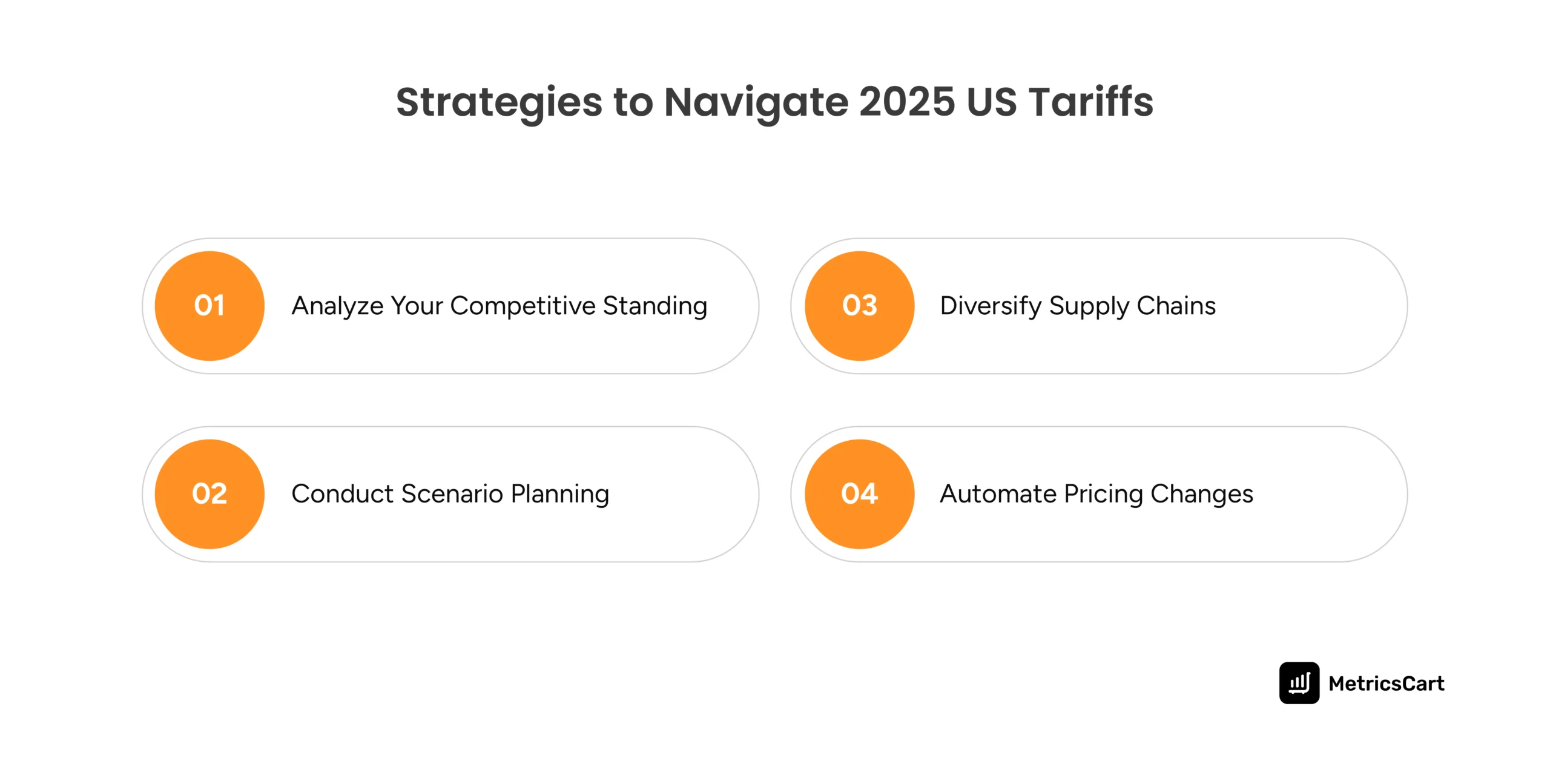
Analyze Your Competitive Standing
The first step is to assess how tariffs alter your company’s competitive standing. Tariffs’ impact depends on your product mix, cost structure, and geographic footprint. Executives should identify and map out the specific exposures in their supply chains, manufacturing bases, and sales markets.
For each product line, ask where its inputs are sourced, and which countries will now charge tariffs? How high are those duties? What share of my cost base do they represent? At the same time, evaluate the end markets: Which customer segments or regions face higher prices?
Once your relative position is clear, the next step is to decide on a strategic posture and corresponding actions. If you have domestic production while rivals import under tariffs, you can ramp up production, expand sales efforts, and invest in growth initiatives.
On the other hand, if tariffs significantly raise your input costs and you have little pricing power, you must cut costs aggressively. You can adopt measures like lean operations, supplier renegotiations, design-to-value improvements, and removing non-essential product features.
Conduct Scenario Planning
Tariff policies can change rapidly, and leaders need agile responses. This requires proactive scenario planning and real-time monitoring. Business leaders should stress-test their plans against multiple future trade scenarios.
For example, consider a base case where current tariffs remain in place, an aggressive case with even higher tariffs, and a case where talks result in some rollbacks. For each scenario, ask: “Which of our products or markets remain viable? At what tariff threshold would we pull the trigger on major moves (e.g. relocating a factory)?”
Laying out these “if-then” rules in advance ensures you’re ready to act quickly when a new tariff announcement hits.
Diversify Supply Chains
One of the most critical steps businesses can take is to diversify their supply chains. Relying on a single region, especially one heavily impacted by tariffs, increases the risk of higher costs and supply chain disruptions.
Companies should consider alternative sourcing options from countries like Vietnam, India, or even domestic suppliers. This can reduce exposure to tariffs and maintain consistent product availability.
In addition, brands can consider dual-sourcing strategies: design your supply chain so that no single country or plant is responsible for all production of a critical part. In contracts, negotiate shorter terms or review triggers so you can swap suppliers if trade policies change.
Additionally, build strategic inventory for critical items and invest in more responsive logistics. While some buffer inventory raises costs, it can buy time to reconfigure when tariffs suddenly spike.
Automate Pricing Changes
When governments impose new tariffs or increase existing ones, the cost of imported goods rises. For e-commerce brands that rely on international supply chains, this can significantly eat into profit margins.
Manually adjusting product prices in response to every change is time-consuming and often too slow to keep up with market shifts, especially for businesses with hundreds or thousands of SKUs.
Using a dynamic repricing tool that integrates real-time tariff data allows sellers to automatically adjust prices in response to cost fluctuations without constant manual oversight. At the same time, it’s critical to ensure that any price changes adhere to MAP policies. These policies are essential for preserving brand equity and preventing price wars across channels.
Repricing tools must be configured to stay within MAP boundaries even during cost surges to avoid undermining retailer relationships or violating internal pricing agreements. Thus, it helps brands remain agile, protect profitability, and reduce the operational burden on pricing and finance teams.
Final Thoughts
Tariffs and trade policy shifts are no longer occasional disruptions; they’re the new reality of global commerce. For business leaders, the challenge is not just to react, but to proactively adapt to changing circumstances.
Whether it’s rethinking your supply chain, reassessing your market exposure, or automating pricing to protect margins, the goal is to build resilience without sacrificing agility.
Tools like MetricsCart play a critical role in this transition. By offering real-time visibility into pricing trends, customer sentiment, and marketplace performance, MetricsCart empowers brands to make faster, data-backed decisions.
Monitor Competitor Pricing and Product Performance with MetricsCart.
FAQs
Tariffs are taxes imposed on imported goods. They can increase the cost of materials and products, disrupt global supply chains, and affect pricing strategies, making them a key concern for businesses operating across borders.
E-commerce brands relying on international suppliers face increased landed costs. This can reduce profit margins, force price hikes, and cause demand fluctuations, especially in price-sensitive categories.
Conduct a tariff risk audit. Identify your most vulnerable products, suppliers, and markets. Platforms like MetricsCart can help track how pricing and demand shift at the SKU level in real-time.
Yes, it’s worth exploring. If tariffs significantly impact margins, relocating production closer to demand centers or to countries exempt from tariffs may be a viable long-term strategy.
By diversifying suppliers, investing in scenario planning, and using tools like MetricsCart to track cross-market trends. Building flexible contracts and sourcing models also improves resilience.

